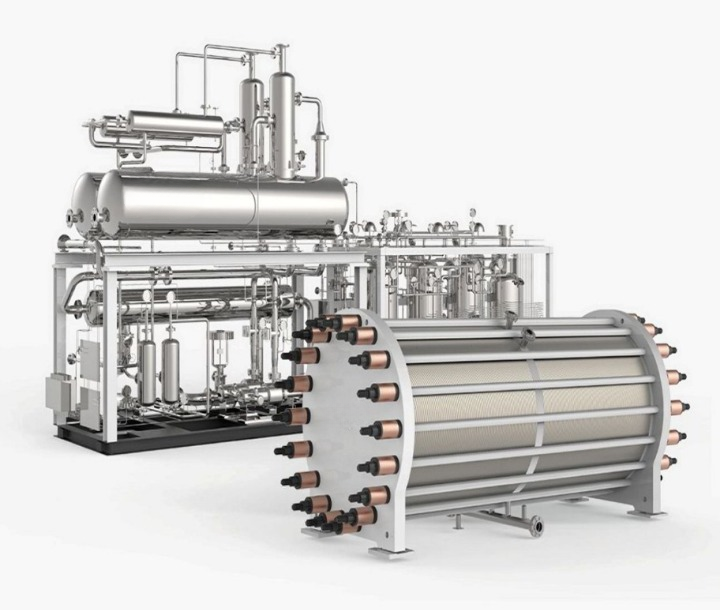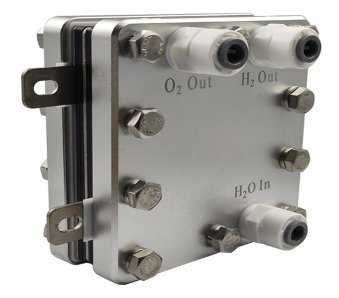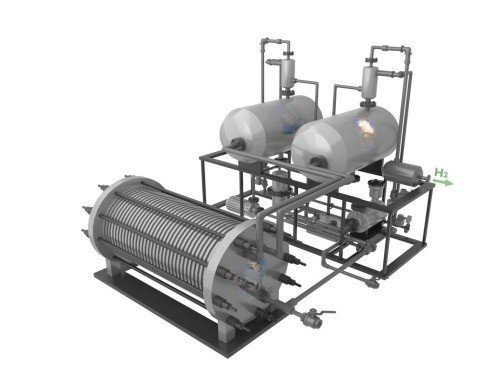Electrolyzer
Electrolyzer
An electrolyzer is a device that uses electricity to split water (H₂O) into hydrogen (H₂) and oxygen (O₂) through a process called electrolysis. It plays a key role in green hydrogen production, especially when powered by renewable energy sources like solar or wind.
How it works
- Water is fed into an electrolysis cell that contains two electrodes, a cathode (-) and an anode (+).
- When an electric current is applied, the water molecules are split into hydrogen and oxygen ions.
- The positively charged hydrogen ions are attracted to the cathode, while the negatively charged oxygen ions are attracted to the anode.
- The hydrogen and oxygen are collected at the respective electrodes.Electricity Input: A direct current (DC) is supplied to the electrolyzer.
Water Splitting: Water molecules break into hydrogen and oxygen.
- At the anode (positive electrode): Oxygen is released.
- At the cathode (negative electrode): Hydrogen is collected.
Gas Separation: The produced gases are separated and stored in external cylinder.

1.Proton Exchange Membrane (PEM) Electrolyzers
- Uses a solid polymer electrolyte.
- More compact and responsive.

2.Alkaline Electrolyzers (AEL)
- Uses liquid alkaline electrolyte (KOH or NaOH).
- Mature technology, widely used.

